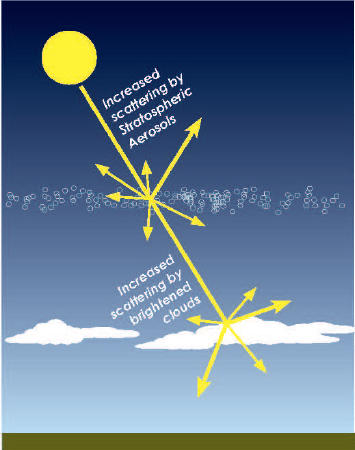Marine Cloud Brightening
Marine cloud brightening refers to an albedo modification technique that aims to increase the reflectivity, and possibly even the lifetimes, of certain clouds in order to reflect more sunlight back into space and partially offset some of the impacts of climate change. The most common proposal for achieving such a goal is to inject naturally occurring sea salt into cloud updrafts. But a variety of methods are being researched.
The Keith Group believes that marine cloud brightening research is valuable. It can teach us a great deal about the ways in which clouds can and do affect our climate. However, our group does not focus on this particular research because current marine cloud brightening proposals carry several key risks.
For example, even if marine cloud brightening could work, it could affect large scale climate and weather patterns if it were used on a large enough scale, say to achieve a level of “radiative forcing” that would be big enough to offset some of the greatest impacts of climate change. (This is because marine cloud brightening could only be implemented in limited areas, where the right kinds of clouds exist, which is perhaps only 10 percent of the planet’s surface.) There are several key risks that need to be better understood.
Still, the fact that more research is needed is true for all geoengineering techniques. So even though the scientists within our group focus most closely on stratospheric aerosol injection, we believe that MCB research is valuable.

https://keith.seas.harvard.edu/marine-cloud-brightening
|